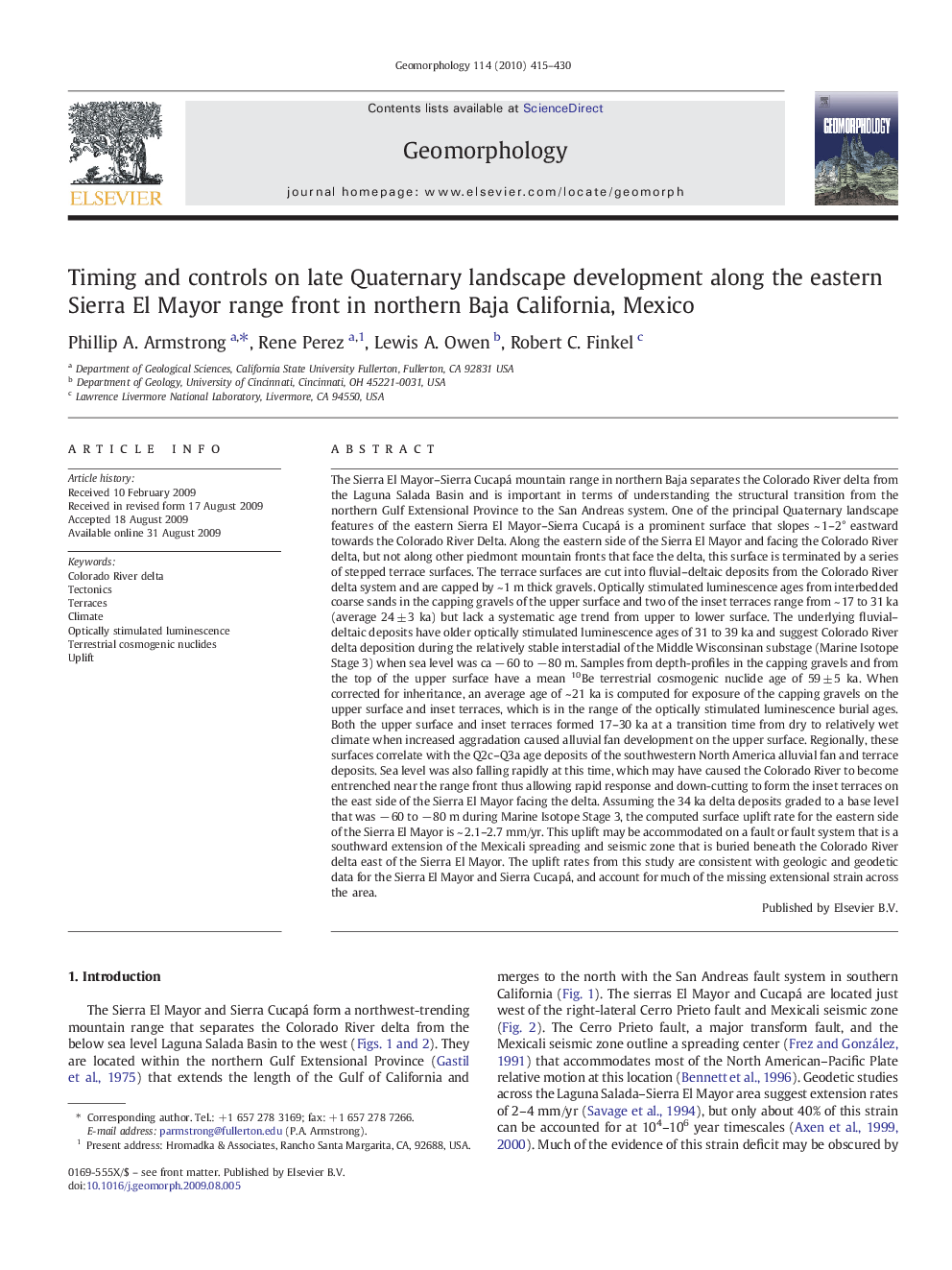| کد مقاله | کد نشریه | سال انتشار | مقاله انگلیسی | نسخه تمام متن |
|---|---|---|---|---|
| 4686188 | 1349534 | 2010 | 16 صفحه PDF | دانلود رایگان |

The Sierra El Mayor–Sierra Cucapá mountain range in northern Baja separates the Colorado River delta from the Laguna Salada Basin and is important in terms of understanding the structural transition from the northern Gulf Extensional Province to the San Andreas system. One of the principal Quaternary landscape features of the eastern Sierra El Mayor–Sierra Cucapá is a prominent surface that slopes ~ 1–2° eastward towards the Colorado River Delta. Along the eastern side of the Sierra El Mayor and facing the Colorado River delta, but not along other piedmont mountain fronts that face the delta, this surface is terminated by a series of stepped terrace surfaces. The terrace surfaces are cut into fluvial–deltaic deposits from the Colorado River delta system and are capped by ~ 1 m thick gravels. Optically stimulated luminescence ages from interbedded coarse sands in the capping gravels of the upper surface and two of the inset terraces range from ~ 17 to 31 ka (average 24 ± 3 ka) but lack a systematic age trend from upper to lower surface. The underlying fluvial–deltaic deposits have older optically stimulated luminescence ages of 31 to 39 ka and suggest Colorado River delta deposition during the relatively stable interstadial of the Middle Wisconsinan substage (Marine Isotope Stage 3) when sea level was ca − 60 to − 80 m. Samples from depth-profiles in the capping gravels and from the top of the upper surface have a mean 10Be terrestrial cosmogenic nuclide age of 59 ± 5 ka. When corrected for inheritance, an average age of ~ 21 ka is computed for exposure of the capping gravels on the upper surface and inset terraces, which is in the range of the optically stimulated luminescence burial ages. Both the upper surface and inset terraces formed 17–30 ka at a transition time from dry to relatively wet climate when increased aggradation caused alluvial fan development on the upper surface. Regionally, these surfaces correlate with the Q2c–Q3a age deposits of the southwestern North America alluvial fan and terrace deposits. Sea level was also falling rapidly at this time, which may have caused the Colorado River to become entrenched near the range front thus allowing rapid response and down-cutting to form the inset terraces on the east side of the Sierra El Mayor facing the delta. Assuming the 34 ka delta deposits graded to a base level that was − 60 to − 80 m during Marine Isotope Stage 3, the computed surface uplift rate for the eastern side of the Sierra El Mayor is ~ 2.1–2.7 mm/yr. This uplift may be accommodated on a fault or fault system that is a southward extension of the Mexicali spreading and seismic zone that is buried beneath the Colorado River delta east of the Sierra El Mayor. The uplift rates from this study are consistent with geologic and geodetic data for the Sierra El Mayor and Sierra Cucapá, and account for much of the missing extensional strain across the area.
Journal: Geomorphology - Volume 114, Issue 3, 15 January 2010, Pages 415–430